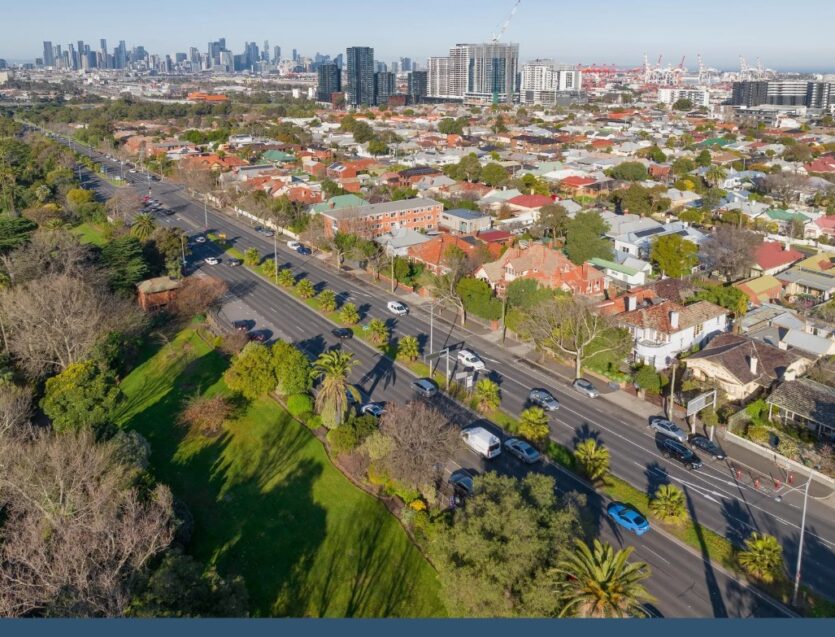House prices will not fall sharply
Article by Christopher Joye, Columnist
Source: Australian Financial Review
April 24, 2020
Everyone loves a contrarian position, and I enjoy betting against conventional wisdom.
It is hard to find a more emphatic and universally held belief than the consensus view that Australian house prices will slump sharply by anywhere between 10 per cent (Commonwealth Bank), 20 per cent (AMP) or 30 per cent (numerous others).
This is, after all, the Great Virus Crisis (GVC): a one-in-100-year shock that the Reserve Bank of Australia judges will drive double-digit unemployment.
So I will repeat what I have publicly and privately advised the many folks who have inquired about my forecast for the $7 trillion-plus residential real estate market: home values are unlikely to fall materially and, in my central case, will either move sideways or at most fall by up to 5 per cent over the next three to six months, after which the robust cyclical boom will resume.
After calling strong house price growth and the ensuing bubble between 2013 and 2017, predicting a 10 per cent correction in early 2017 when prices were climbing, and then forecasting a 10 per cent recovery in April 2019, I remain confident that this cycle will deliver total capital gains of between 20 per cent and 30 per cent.
Yes, I know some hate the fact that I have the temerity to highlight these victories over, variously, the perma-housing bulls and bears, depending on what point of the cycle we are in. Yet I have learnt the hard way that unless I carefully restate these views, critics will distort and cherry-pick them for their own purposes.
So, for the avoidance of doubt, let me reiterate that if Australia was about to experience a multi-year downturn precipitated by China imploding or high inflation and rising interest rates, I would expect a 20 per cent to 40 per cent drawdown in the value of our bricks and mortar powered by the mother of all deleveraging processes.
But that is not where we stand today.
In February, this column warned that unless central banks quickly cauterised the GVC with unconditional quantitative easing and liquidity support, we would experience savage market failures. In particular, an international liquidity crisis that rapidly became a huge public and private solvency problem. While the central banks surprisingly dithered for weeks, and the price action sadly played out as predicted, we eventually got all of the monetary and fiscal policy stimulus markets needed.
The next big intellectual question was the likely course of the virus.
Whereas some epidemiologists advised politicians that the peak in new infections would not be for months, and most Australians would get infected, our empirical forecasting models projected peaks in Australia, the US and Europe in early April.
It turned out that new infections in Australia peaked on March 28 and they started rolling over in the US on April 11. Most of Europe had reached the zenith by the middle of the month.
These insights guided our view that Australia would pivot away from the proposed “six-month business hibernation” plan – which would have been catastrophic – towards an early exit from containment after a one- to two-month lockdown.
Prime Minister Scott Morrison appears to have pragmatically embraced this logic after his stunning success in flattening our infection curve, with “Operation Kickstart” slated to begin some time in May.
This is important for the housing market’s trajectory too.
A one to two month lockdown followed by an assertive effort to get workers back into their jobs will minimise the quantum of mortgage arrears and losses.
In this crisis, unemployment has also risen most noticeably among the casualised, non-home-owning labour force. Combined with the fact that the banks have been given the green light to offer six-month repayment holidays without having to hold more capital against these loans or report them as arrears, we are unlikely to see large swaths of forced sellers.
Because almost all borrowers are on variable rate loans or short-term, fixed rate products, Australia’s housing market is one of the most interest rate-elastic in the world. The prospect of multiple RBA rate cuts is what motivated our call for a 10 per cent increase in prices in April last year.
Prices still rising in March, April
Monetary policy easing since June 2019 has reduced new fixed and variable mortgage rates by between 75 and 150 basis points, which according to the RBA’s internal house price modelling should push values up by between 20 per cent and 30 per cent. Since prices troughed nationally in July 2019, they have jumped by about 11 per cent.
If there is one asset class that has performed exceptionally well during the GVC, it is local bricks and mortar.
According to the world’s most advanced daily house price index, produced by CoreLogic, Sydney and Brisbane prices continued climbing through March and April. In Sydney we are just starting to see some evidence of flat-lining. Melbourne prices have moved sideways since mid-March, but show no signs of any striking deterioration.
While auction clearance rates have plummeted, that is because of the lockdown. In the absence of serious housing stress, vendors are choosing to pull listings and exercise the option to wait. I expect that once we come out of containment in May, the housing boom will reassert itself, shocking universally negative forecasters.
Of course, it is possible I will be wrong. We have not encountered a GVC since the Spanish flu in 1918. There could be second waves. We might not find a vaccine. Tensions between China and the US could escalate into a military conflict. But that is not my central case.
One area where I have been consistently pessimistic has been the high yield bond market, especially those issued by “zombie companies”, which I have repeatedly argued would create chaos on the ASX for some of the listed investment trusts (LITs) that invest in these assets. (A zombie is a company paying 100 per cent or more of its earnings to service the interest on its debt.)
In March, the high yield LIT sector blew up, suffering 20 per cent to 40 per cent losses that were as bad as, if not worse than, the equities market. Those who countered that the high yield LITs were different to their equity cousins because they traded at or above their net tangible assets (NTAs), were proved wrong, as we warned.
Virgin Airlines was a classic case of a zombie. Highly leveraged and unprofitable, it was inherently fragile and vulnerable to macro, geopolitical and/or other left-tail (eg, terrorist) shocks. Pity the poor punters who naively poured $325 million into Virgin’s senior unsecured bonds on the ASX, only to be wiped out.
There will be some attractive opportunities in distressed high yield globally in the period ahead. And there are many wonderful investors in this space whom I admire. But I expect we will read more war stories about rating downgrades, defaults and losses among corporate bond borrowers.
A final area that is a disaster right now is the leveraged commercial property market. This is suffering from a simultaneous shock of lower revenues as tenants don’t pay or reduce their rents, combined with a massive reduction in values. Loan-to-value property ratios are skyrocketing, putting at risk debt covenants. And if the commercial property owners have borrowed via issuing bonds, there is no hope of repayment holidays.
As a result of the unprecedented global experiment in mass remote working, there will be a significant structural diminution in demand for office properties at the same time that office supply is surging. This will be a medium-term problem for both equity and debt investors in commercial real estate, which as a sector we have historically avoided like the plague.



Currently, Perth is the capital city that our research is driving our clients to for optimal investment outcomes. Keep an eye out for our upcoming report on Victoria, and the opportunities we feel this market will present from early to mid-2025. CPA Property Reports are the ultimate research tool for those considering an investment into the any Australian property market.